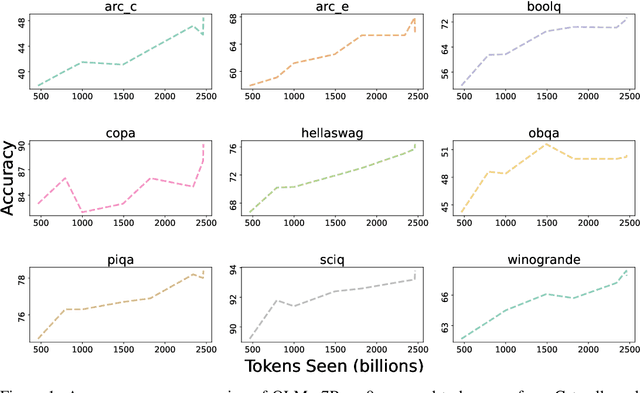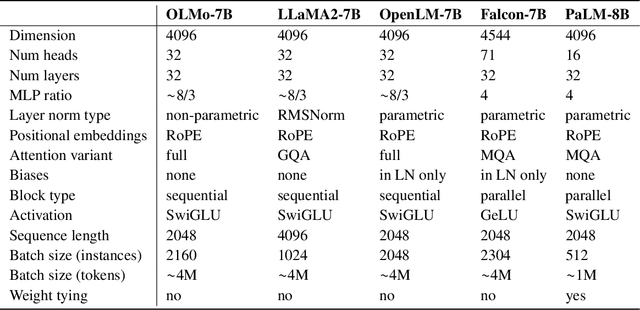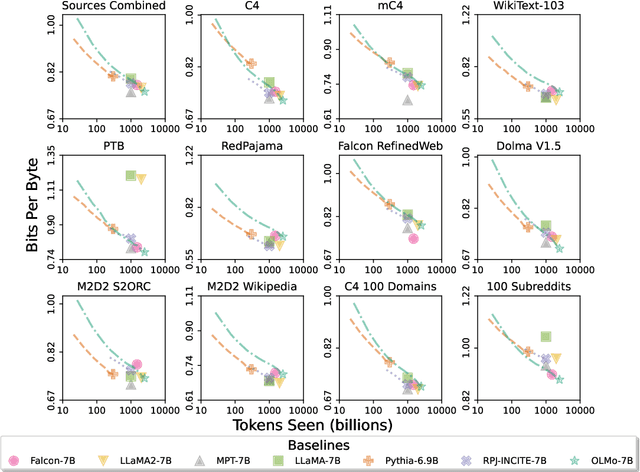Saurabh Shah
OLMo: Accelerating the Science of Language Models
Feb 07, 2024



Abstract:Language models (LMs) have become ubiquitous in both NLP research and in commercial product offerings. As their commercial importance has surged, the most powerful models have become closed off, gated behind proprietary interfaces, with important details of their training data, architectures, and development undisclosed. Given the importance of these details in scientifically studying these models, including their biases and potential risks, we believe it is essential for the research community to have access to powerful, truly open LMs. To this end, this technical report details the first release of OLMo, a state-of-the-art, truly Open Language Model and its framework to build and study the science of language modeling. Unlike most prior efforts that have only released model weights and inference code, we release OLMo and the whole framework, including training data and training and evaluation code. We hope this release will empower and strengthen the open research community and inspire a new wave of innovation.
Explanation-based Finetuning Makes Models More Robust to Spurious Cues
May 08, 2023Abstract:Large Language Models (LLMs) are so powerful that they sometimes learn correlations between labels and features that are irrelevant to the task, leading to poor generalization on out-of-distribution data. We propose explanation-based finetuning as a novel and general approach to mitigate LLMs' reliance on spurious correlations. Unlike standard finetuning where the model only predicts the answer given the input, we finetune the model to additionally generate a free-text explanation supporting its answer. To evaluate our method, we finetune the model on artificially constructed training sets containing different types of spurious cues, and test it on a test set without these cues. Compared to standard finetuning, our method makes models remarkably more robust against spurious cues in terms of accuracy drop across four classification tasks: ComVE (+1.2), CREAK (+9.1), e-SNLI (+15.4), and SBIC (+6.5). Moreover, our method works equally well with explanations generated by the model, implying its applicability to more datasets without human-written explanations.
 Add to Chrome
Add to Chrome Add to Firefox
Add to Firefox Add to Edge
Add to Edge